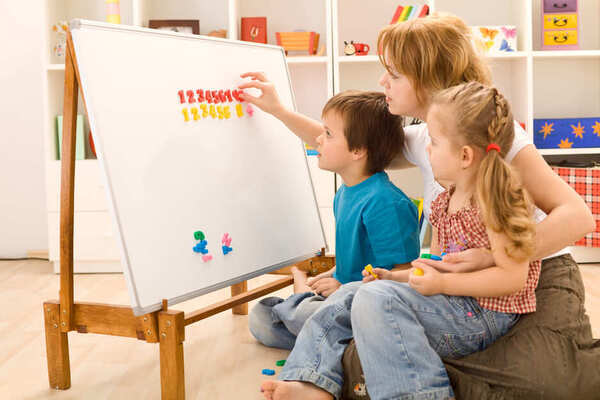Parenting
4-Year-Old Out of Control: Tips for Managing Challenging Behavior

For many parents, the phrase, 4-Year-Old out of Control resonates all too deeply. Navigating the world of tantrums, disobedience, and aggression becomes a daily challenge at this age. While it’s a natural phase for these youngsters to test limits and boundaries, certain behaviors can escalate concerns and warrant immediate attention. The journey of managing a rebellious 4-year-old can leave parents both helpless and seeking solutions.
In this article, we tackle the common challenge parents of 4-year-olds face – managing tantrums, disobedience, and aggression. Additionally, we’ll guide you through understanding your toddler’s behavior, setting clear expectations, and being a model of positive behavior.
Key Takeaways:
- Understanding the reasons behind a 4-year-old’s out-of-control behavior can help parents manage it more effectively.
- Clear expectations and positive role modeling can help promote positive behavior in young children.
- Seeking professional help may be necessary if behavior issues persist or are causing significant distress.
Understanding Your 4-Year-Old’s Behavior
Understanding Your 4-year-old’s Behavior is the first step in managing out-of-control behavior. Four-year-olds are still learning how to communicate their wants and needs effectively, and they may resort to tantrums or aggression when they feel frustrated, angry or overwhelmed.
At the age of 4, children are at a crucial stage of development. They are learning more about the world around them, gaining independence, and developing their own personalities. However, this can also be a challenging time for parents as their child’s behavior may become more difficult to manage.
Parents can help by setting clear expectations and modeling positive behavior. It’s also important to recognize that some behaviors may be a sign of underlying issues such as anxiety or ADHD.
What is ADHD?
ADHD, or Attention-Deficit/Hyperactivity Disorder, is a neurodevelopmental disorder that affects approximately 5% of children ages four and adolescents worldwide. The primary symptoms of ADHD are:
- Inattention
- Hyperactivity
- Impulsivity
Based on behavioral and social sciences findings, these can manifest in various ways including difficulty sustaining attention, frequent careless mistakes, difficulty organizing tasks, fidgeting, talking excessively, and interrupting or intruding on others.
Here are some things to keep in mind when trying to understand your 4-year-old’s behavior.
Developmental Milestones
At 4 years old, children are typically able to do a lot more on their own than they could when they were younger. They can dress themselves, use the bathroom independently, and follow simple instructions. They are also starting to develop their social skills and may be more interested in playing with other children.
Common Behavior Problems
It is common for 4-year-olds to have difficulty controlling their emotions. They may be more defiant and may not want to follow rules or listen to adults. However, this is a normal part of development, but it can be challenging for parents to manage.
Such behavior problems may include:
- Tantrums
- Become easily frustrated
- Difficulty sharing
- Poor impulse control
Identifying Out-of-Control Behavior
While some behavior problems are normal for 4-year-olds, there are times when a child’s behavior may be out of control. This can include physical aggression towards others, destruction of property, or self-harm. If you notice these types of behaviors in your child, it is important to seek help from a professional.
Overall, it is important to keep in mind that 4-year-olds are still learning and developing. While their behavior may be challenging at times, it is important to remain patient and understanding.
Possible Causes of Out-of-Control Behavior
When a four-year-old child begins to exhibit out-of-control behavior, it can be frustrating and concerning for parents. There are several possible causes of this behavior, including stress, lack of routine and structure, and impulse control issues.
Stress and Frustration
Stress and frustration can be major contributors to out-of-control behavior in young children.
Children at this age are still learning to manage their emotions and often lack the verbal skills to express their feelings effectively. When they feel overwhelmed or frustrated, they may resort to lashing out physically or verbally.
Parents can help their children manage stress and frustration by creating a calm and supportive environment at home. Encouraging open communication and providing opportunities for relaxation and play can also be helpful.
Lack of Routine and Structure
A lack of routine and structure can also contribute to out-of-control behavior in young children. Children thrive on predictability and routine, and when their daily lives lack structure, they may become anxious and unsettled.
To mitigate this, parents can do the following:
- Establish regular times for meals, bed, and play.
- Create a structured environment that gives children a sense of security and control.
Impulse Control
At this age, younger children are in the process of learning how to control their impulses and may struggle with self-regulation, contributing to out-of-control behavior.
By setting clear boundaries, consistent consequences, discipline strategies, as well as teaching methods such as counting to ten or deep breathing, parents can assist their children in developing better impulse control.
How to Manage and Set Limits
Managing and setting limits for a 4-year-old child can be challenging, but it is crucial for their development and safety. Let’s discuss some effective strategies to establish household rules and how to set healthy boundaries.
Establishing Household Rules
Establishing household rules is essential for a child’s development, as it teaches them boundaries and expectations. It is important to involve the child in the process of creating rules so that they feel a sense of ownership and responsibility.
Some examples of household rules for a 4-year-old could be:
- No hitting, biting, or kicking
- No throwing objects indoors
- No yelling or screaming
- No running in the house
- No touching dangerous objects like knives or electrical outlets
KinVibes Pro-Tip: It is important to be consistent with enforcing the rules and to explain the consequences of breaking them. Using positive reinforcement, such as praise and rewards, can also encourage good behavior.
Using Time-Outs Effectively
Time-outs are an effective way to discipline a child who is misbehaving or breaking household rules. When a child misbehaves, parents can calmly explain the rules and send them to a designated time-out area for a few minutes. This gives the child time to calm down and reflect on their behavior. It is important to make sure the time-out area is safe and free from distractions.
Some tips for using time-outs effectively include:
- Explain the reason for the time-out
- Use a timer to keep track of the time
- Do not engage with the child during the time-out
- Use positive reinforcement when the time-out is over and the child has calmed down
Logical Consequences and Loss of Privileges
In addition to time-outs, appropriate consequences and loss of privileges are additional ways to teach a child about the consequences of their actions.
For example, if a child breaks a toy, they may lose the privilege of playing with that toy for a certain amount of time. If a child refuses to clean up their toys, they may lose the privilege of watching TV for the rest of the day.
Most importantly, the punishment should match the behavior, and it’s essential to explain why there are clear consequences to help children understand and learn. Additionally, consistency in enforcement is essential to help children understand and learn from their actions.
Promoting Positive Behavior

When dealing with a 4-year-old who is exhibiting out-of-control behavior, promoting positive behavior can be an effective strategy of supporting parents.
Below is a table overview of the strategies for promoting positive behavior in children, along with examples and the benefits of each strategy.
| Strategy | Example | Benefits |
|---|---|---|
| Praise and Reinforcement | Assigning regular chores like picking up toys and implementing a reward system for completed tasks. | Fosters a positive self-image and motivation. |
| Teaching Responsibility | Facilitating open conversations about feelings and role-playing to understand others’ perspectives. | Develops a sense of responsibility and autonomy. |
| Encouraging Empathy | Asking, “How can we solve this problem together?”; Providing opportunities for independent decision-making. | Promotes emotional intelligence and compassion. |
| Problem-Solving Skills | Asking “How can we solve this problem together?”; Providing opportunities for independent decision-making. | Enhances critical thinking and resilience. |
Praise and Reinforcement
Parents can create a positive behavior cycle by recognizing and rewarding good behavior rather than punishing bad behavior.
One way to do this is by:
- Creating a reward system
- Acknowledgment through sticker chart
- A small treat for completing tasks
As a result, it reinforces positive behavior and encourages the child to continue behaving well.
Teaching Responsibility
Assigning regular age-appropriate chores can help children learn responsibility and become more independent. Parents can also use positive language when assigning tasks, focusing on what the child can do rather than what they can’t. This can help build the child’s self-esteem and encourage them to take on more responsibilities.
Encouraging Empathy and Problem-Solving Skills
Fostering empathy and problem-solving abilities is another effective strategy for parents. Simultaneously, parents can also help their children develop problem-solving skills by asking them to come up with solutions to problems they encounter. This can help the child feel more in control and capable of handling difficult situations.
- Engaging in open conversations about the impact of the child’s behavior on others.
- Encouraging them to think about how they would feel in someone else’s shoes.
When to Seek Professional Help

If a four-year-old’s behavior is getting worse and is causing concern, seeking professional advise and help may be necessary. These indicators suggest it could be time to reach out to a pediatrician or another specialist:
Pediatrician Assessment
A pediatrician can assess a child’s behavior and determine if there is an underlying medical condition that is contributing to the child’s behavior problems. The doctor may recommend only high-quality sources, such as further testing, or refer the child to a specialist.
Therapy Options
Therapy can be helpful for children with behavior problems. A therapist can work with the child and family to identify triggers and develop coping strategies. Several types of therapy may be recommended, such as:
- Play therapy
- Cognitive-behavioral therapy
- Family therapy
Medication Considerations
In some cases, medication may be recommended to help manage a child’s behavior problems. This is typically a last resort after other interventions have been tried. A child’s pediatrician or child psychiatrist can evaluate the kid and determine if medication is appropriate.
Keep in mind: It is always important to seek professional help if a child’s behavior is causing significant disruption in their daily life or if it is a safety concern. With the right interventions and support, most children can learn to manage their behavior and thrive.
Parenting Strategies for Young Children

Parenting young children can be a challenging task, especially when they are out of control. The following strategies provide parents with practical ways to handle and guide their child’s conduct effectively:
Positive Parenting
Positive parenting is an approach that emphasizes positive reinforcement and praise to encourage good behavior. Moreover, it helps to build a positive relationship between parents and children and fosters a sense of trust and respect.
Techniques associated with positive parenting include:
- Giving compliments
- Rewards
- Encouragement
Dealing with Power Struggles
To avoid power struggles, parents can create structure and try to give their children choices instead of commands. In this way, it gives children a sense of control and can help to reduce the likelihood of power struggles.
For example, instead of saying “Put on your shoes,” parents can ask “Which shoes do you want to wear today?”
Understanding and Managing Big Feelings
Lastly, parents can help their children identify and manage their emotions by teaching them coping skills like deep breathing or taking a break. Moreover, by demonstrating a healthy way of processing and expressing their own emotions, parents set a positive example for their children.
Final thoughts – HANDLE YOUR 4 YEAr OLD WITH EASE

As we’ve learned, it is normal for 4-year-olds kids to have out-of-control behavior at times due to their lack of impulse control and self-regulation. Parents can help their children positively work through their feelings by having an empathetic point of view and avoiding losing their temper.
Ultimately, if parents are concerned about their child’s behavior, they should seek guidance from a pediatrician or mental health professional. By working together, parents and professionals can help children develop the skills they need to regulate their behavior and emotions effectively.
Frequently Asked Questions
What are some common behavior problems for 4-year-olds?
Four-year-olds are at a stage where they are still learning how to regulate their emotions and behavior. Some common behavior problems for 4-year-olds include:
- Temper tantrums
- Defiance
- Aggression
- Impulsivity
What are some signs that a 4-year-old is out of control?
Signs that a 4-year-old is out of control include:
- Intense and frequent temper tantrums
- Hitting
- Biting, or kicking others
- Destroying property
- Refusing to follow directions
How can I discipline my 4-year-old who doesn’t listen?
Consistency is key when it comes to discipline and punishment. Time-outs or taking away privileges can be effective consequences for misbehavior. It is also important to praise and reward positive behavior.
Are there any resources I can use when my 4-year-old is out of control?
Examples of resources are parenting classes, therapy, and support groups. These can all help learn effective parenting strategies and coping mechanisms.
What are some strategies for dealing with an out-of-control 4-year-old at school?
Strategies for dealing with an out-of-control 4-year-old at school are:
- Communicating with the child’s teacher and school
- Ensure consistency in expectations
- Utilize positive reinforcement to encourage better behavior
Is it normal for a 4-year-old to be extremely defiant?
Defiance is a common behavior for 4-year-olds as they are still learning how to regulate their emotions and behavior. However, if the defiance is extreme and persistent, it may indicate an underlying issue, and professional help may be needed.
